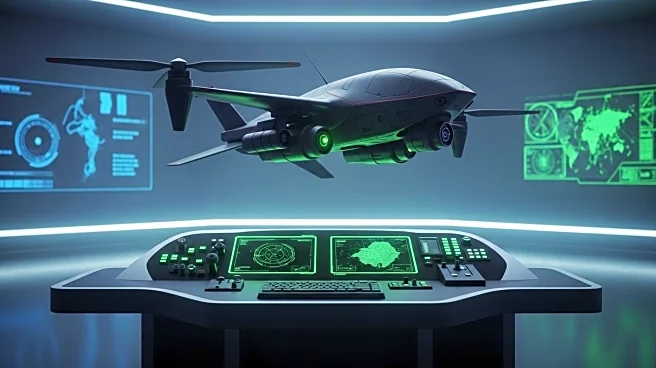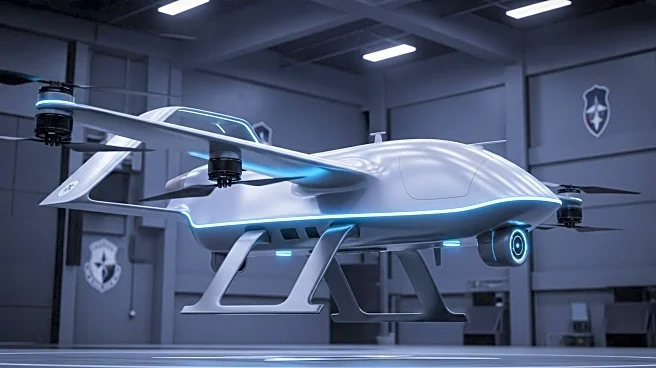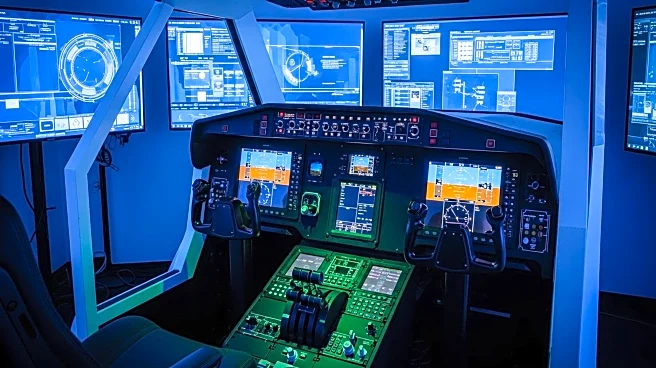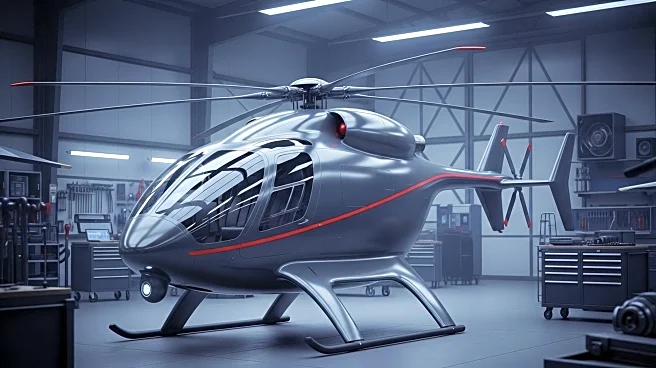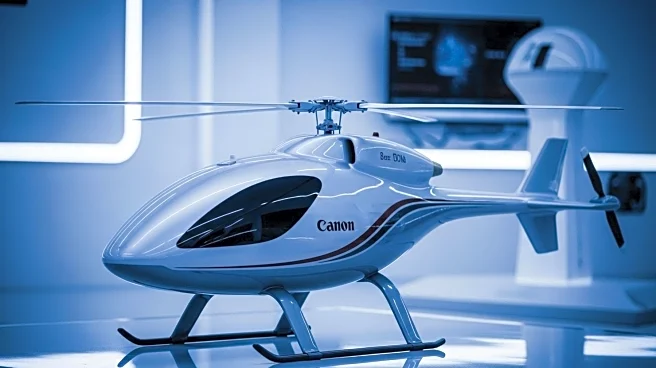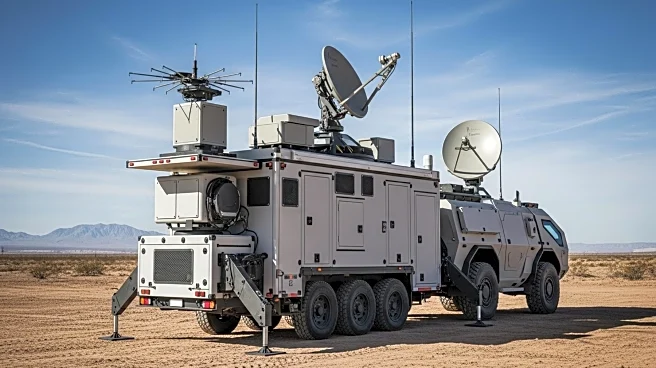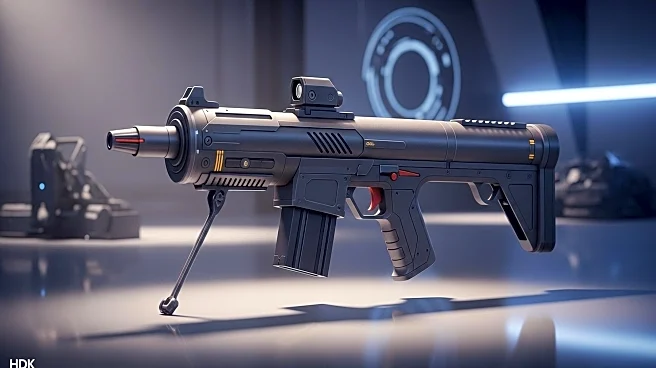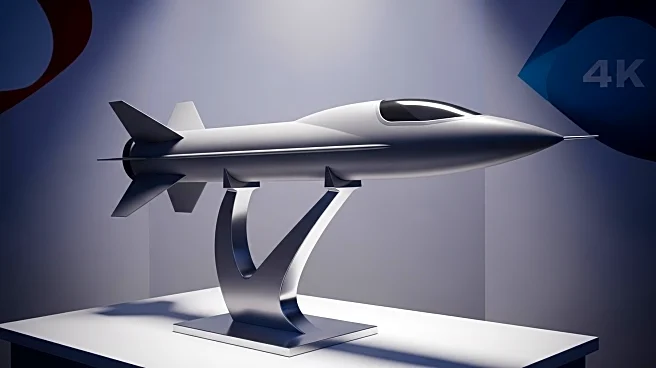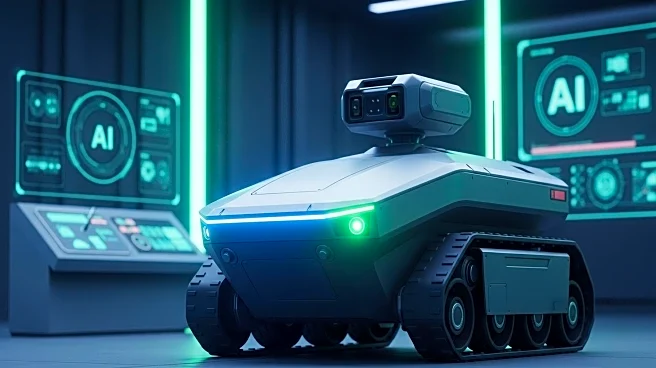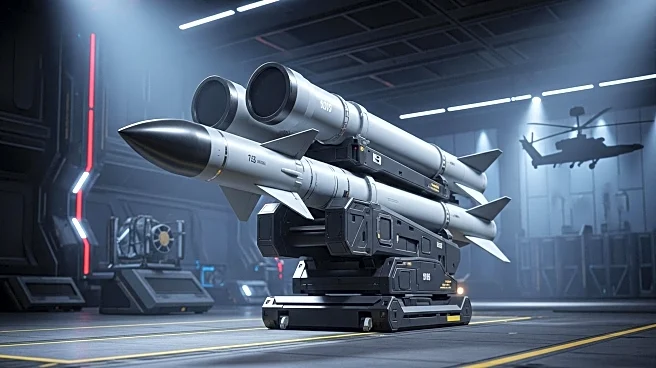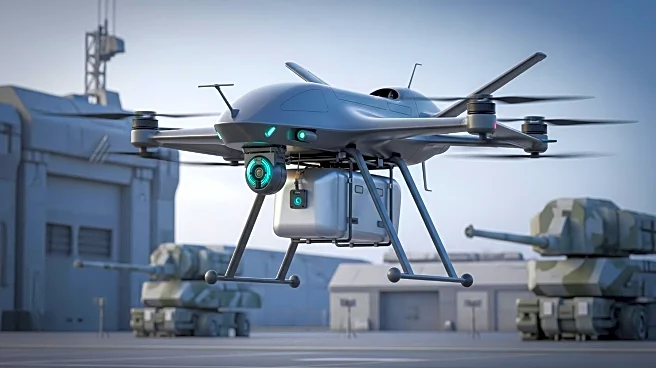What's Happening?
Boeing has introduced a new large, high-speed vertical take-off-and-landing (VTOL) uncrewed aircraft system (UAS) concept, known as the Collaborative Transformation Rotorcraft (CxR), designed for the U.S. Army. This modular design is initially focused on strike and reconnaissance roles but can be adapted for cargo missions. The CxR is set to be the largest UAS in the Army's inventory since the MQ-1C Gray Eagle, featuring a tiltrotor configuration powered by a single gas-fueled turboshaft engine. The aircraft can carry weapon and sensor payloads weighing up to 2,000 lbs and is capable of speeds between 200-250 knots. Boeing revealed the CxR concept at the Association of the U.S. Army’s Annual Meeting, highlighting its potential to meet current and future mission needs.
Why It's Important?
The introduction of Boeing's CxR concept represents a significant advancement in military aviation technology, potentially enhancing the U.S. Army's operational capabilities. The modular design allows for versatility in mission roles, from combat to logistics, which could streamline operations and reduce costs associated with maintaining multiple aircraft types. The CxR's ability to carry substantial payloads and its high-speed capabilities may provide the Army with improved reconnaissance and strike options, increasing effectiveness in various combat scenarios. This development also positions Boeing competitively against other defense contractors like Sikorsky and Shield AI, who are exploring similar VTOL UAS technologies.
What's Next?
Boeing is continuing to refine the CxR design through operational analysis to meet the Army's specific requirements. As the concept progresses, it may lead to further collaborations or contracts with the military, potentially influencing future procurement decisions. Competitors such as Sikorsky and Shield AI are also developing VTOL UAS technologies, which could lead to increased innovation and competition in the defense sector. The Army's interest in advanced UAS technologies suggests a shift towards integrating more sophisticated unmanned systems into their operations.
Beyond the Headlines
The development of the CxR concept may have broader implications for the future of military aviation, particularly in the realm of unmanned systems. As technology advances, ethical and legal considerations regarding the use of autonomous systems in combat may arise, necessitating new policies and regulations. Additionally, the focus on modular and adaptable designs could influence future aircraft development, promoting sustainability and efficiency in military operations.
